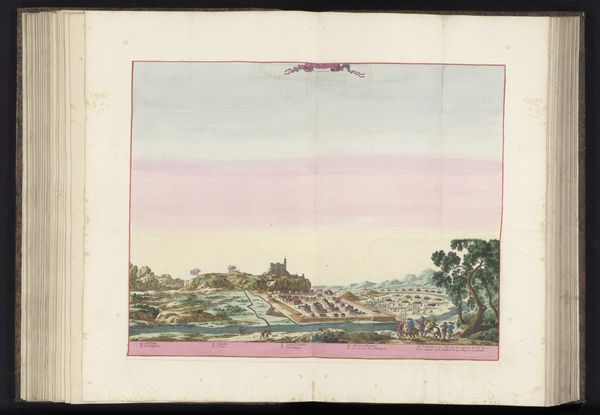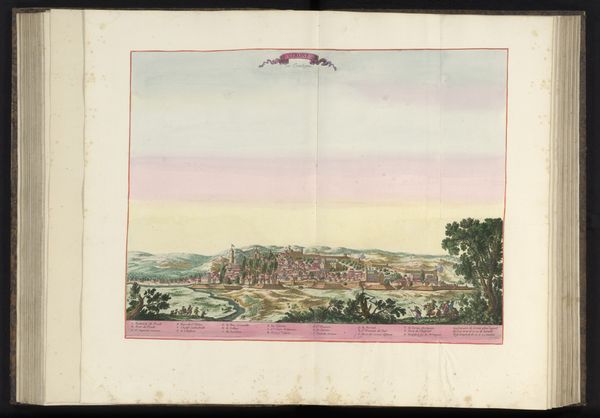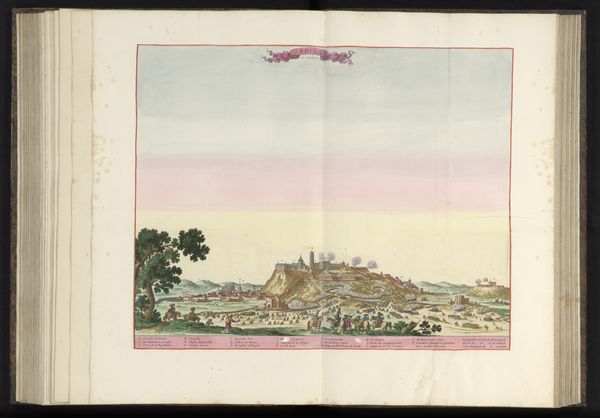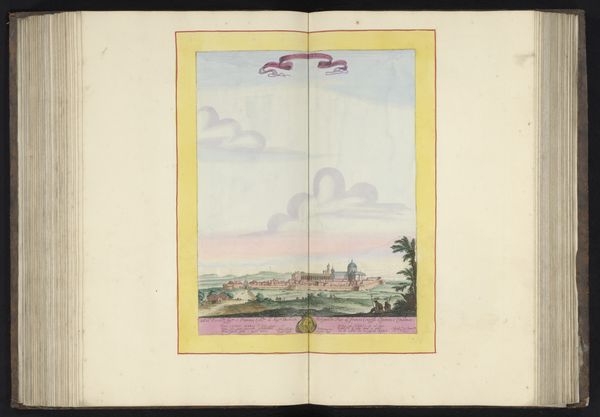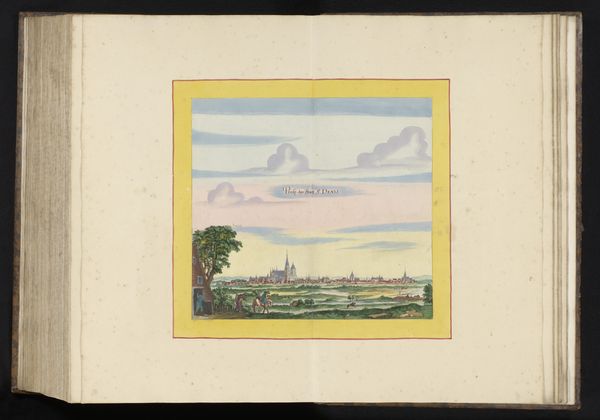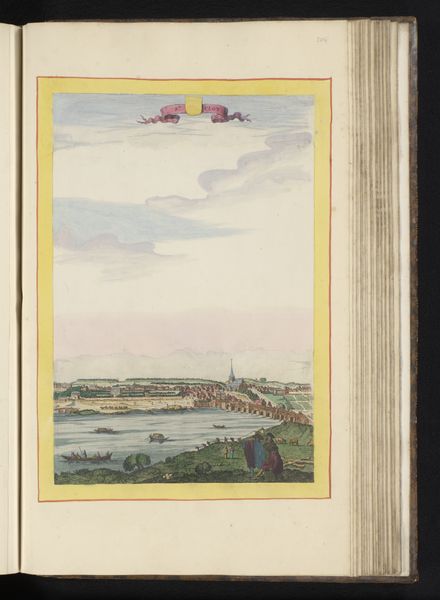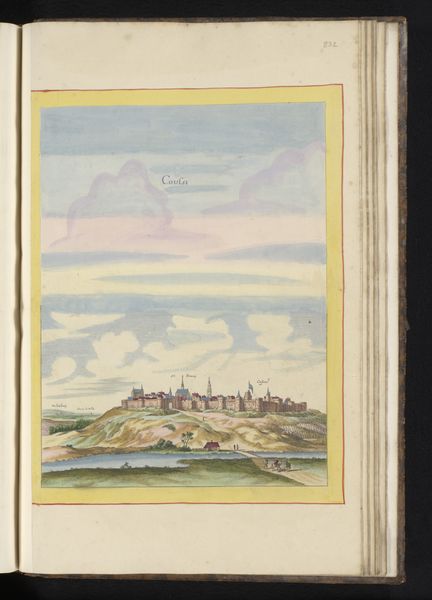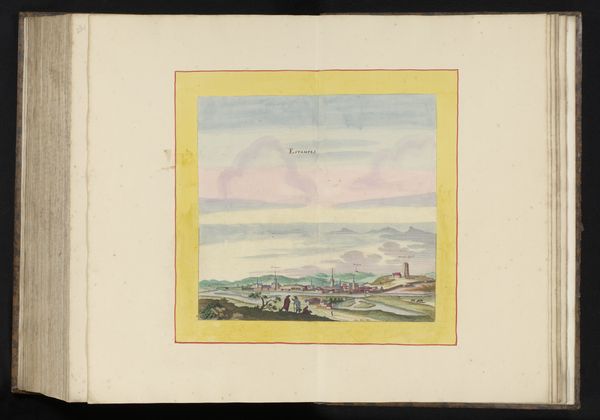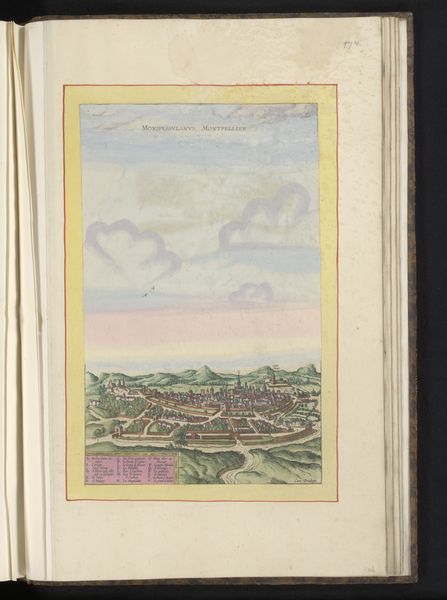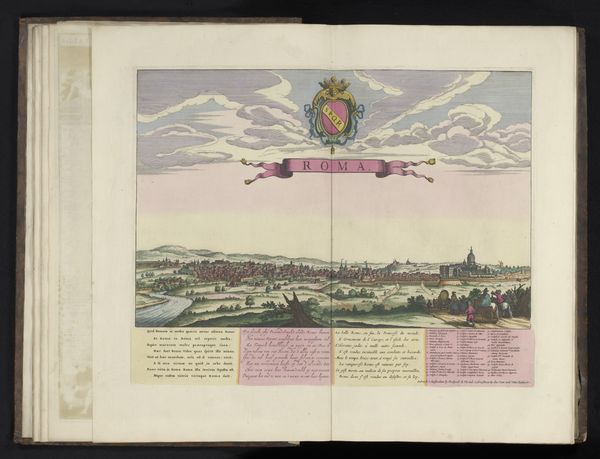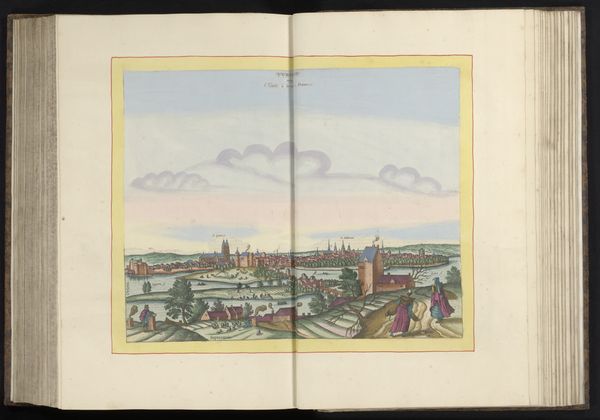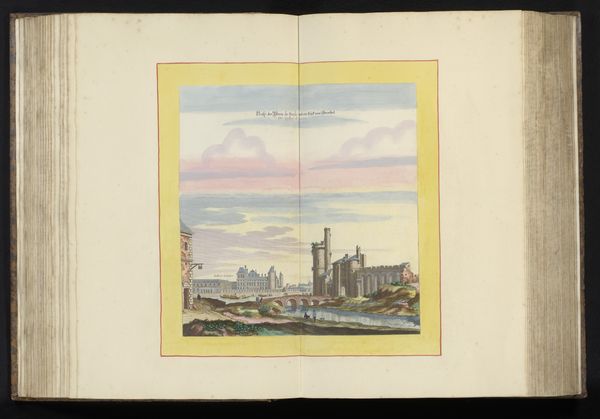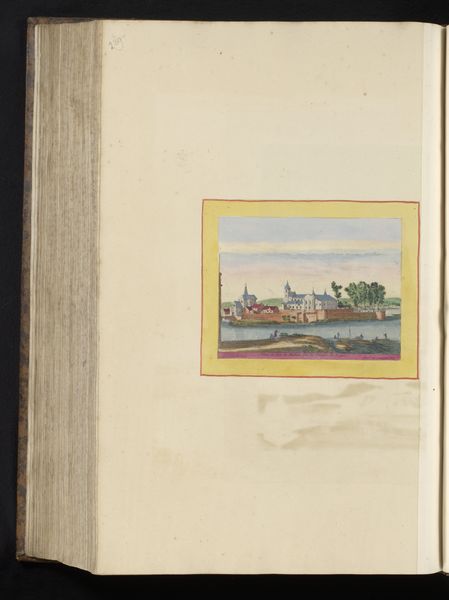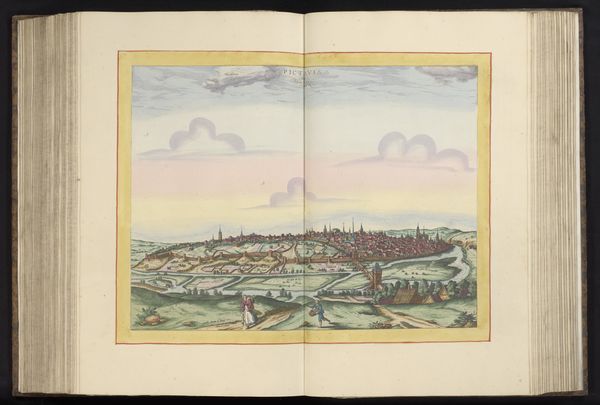
Gezicht op de stad Tarragona in Catalonië ten tijde van de Franse en Catalaanse inname in 1641 1644
0:00
0:00
painting, paper, watercolor
#
baroque
#
painting
#
landscape
#
paper
#
watercolor
#
coloured pencil
#
cityscape
#
watercolor
Dimensions: height 394 mm, width 500 mm, height 531 mm, width 630 mm
Copyright: Rijks Museum: Open Domain
Editor: This watercolor and ink cityscape is "View of the City of Tarragona in Catalonia at the time of the French and Catalan Conquest in 1641," created by Adam Perelle around 1644 and housed at the Rijksmuseum. I'm struck by how the delicate washes of color create a sense of distance and serenity, despite the implied conflict. How would you interpret this piece from a formalist perspective? Curator: Indeed, the atmospheric perspective achieved through layered watercolor washes is quite compelling. Notice how Perelle manipulates the saturation and value of the colors to establish depth, drawing our eye from the detailed foreground to the soft, hazy cityscape in the background. Consider the linear elements as well; the sharp delineation of the architecture contrasts with the fluid rendering of the landscape, creating a visual tension. Do you find any specific compositional elements particularly effective? Editor: I think the contrast between the man-made structures and the natural forms creates a strong focal point, and the framing with that single tree draws the eye in. Curator: Precisely. The strategic placement of the tree serves as a repoussoir, further enhancing the illusion of depth. We must also acknowledge the use of line and form; note how the artist has created a balance between geometric regularity in the buildings, with their vertical thrust and repetitive patterning, and organic variation in the natural setting. It invites us to delve deeper into Perelle’s construction of pictorial space and the strategic manipulation of visual elements. Do you agree that this contrast directs us to contemplate the intersection of nature and artifice? Editor: Absolutely! Thinking about the shapes and forms and the strategic use of line creates a dialogue beyond the historical context. I appreciate noticing how Perelle orchestrates visual components like colour, line and texture.
Comments
No comments
Be the first to comment and join the conversation on the ultimate creative platform.
